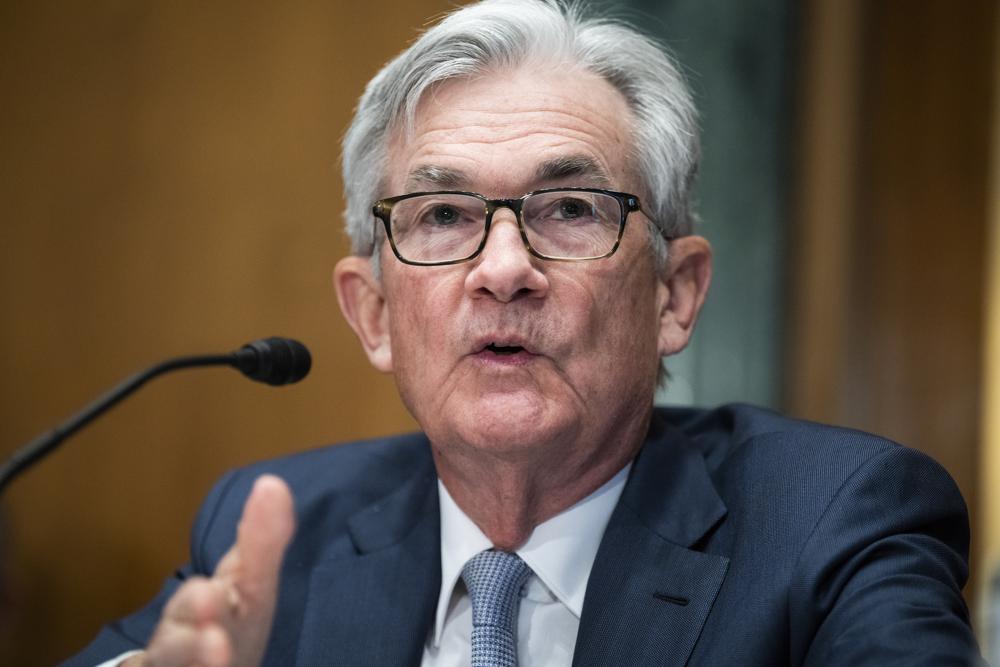
The Federal Reserve on Wednesday will launch one of the most difficult tasks a central bank can attempt: Raise borrowing costs enough to slow growth and tame high inflation, but not so much as to topple the economy into recession.
With a war raging in Europe and price increases at a four-decade high, Fed Chair Jerome Powell will seek to engineer a “soft landing”: A gradual slowdown in economic activity that helps curb surging prices, while keeping the job market and economy expanding.
Yet many economists worry that with the price of gas and commodities spiking, the additional burden of higher interest rates could choke off growth entirely.
“You’ve got to be both lucky and good” to avoid causing a downturn, said Alan Blinder, a Princeton University economist who served as vice chair of the Fed from 1994 to 1996, when the central bank was widely seen as achieving a soft landing.
As a first step, the Fed is set to raise borrowing rates several times this year, beginning this week with a quarter-point increase in its benchmark short-term rate. Policymakers will also discuss when and how fast to shrink the Fed’s $9 trillion in bond holdings, a step that would also have the effect of tightening credit for consumers and businesses.
Such moves mark a sharp turn away from the Fed’s ultra-low-rate policies, which it enacted when the pandemic recession erupted two years ago. By pinning its key rate near zero for two years and buying trillions in bonds, the Fed has kept borrowing costs at historically low levels and helped boost stock prices.
The Fed, by its own admission, underestimated the breadth and persistence of high inflation after the pandemic struck. Many economists say the central bank made its task riskier by waiting too long to begin raising rates.
The average 30-year fixed mortgage rate, which reached a record low of 2.65% in January 2021, has jumped to 3.85% in the past three months, as Powell has signaled the Fed’s intentions and inflation has spiraled higher.
By raising short-term rates, the Fed hopes to make it costlier to buy homes and cars and to boost credit card rates and borrowing costs for businesses. The resulting pullback in spending should, in turn, slow inflation, Powell told Congress two weeks ago. Strong consumer spending, fueled by stimulus checks and steady hiring and pay raises, has collided with supply shortfalls to raise inflation to 7.9%, the highest rate since 1982.
“People will spend less, and what we hope to achieve is bringing the economy to a level where demand and supply are in sync,” Powell said at a Senate Banking Committee hearing.
If the Fed succeeds, he said, the economy should keep growing, and unemployment, over time, should stay low — it’s now 3.8% — or fall further.
“I think it’s more likely than not that we can achieve what we call a soft landing,” Powell told a House panel a day before his Senate testimony.
Yet the Fed faces a dizzying array of uncertainties that will make its task particularly challenging. The economy is still working through shortages of labor and parts stemming from the disruptions of the pandemic. And now prices are rising further for oil, gas, wheat, and other commodities because of Russia’s war against Ukraine.
The clearest soft landing was achieved in 1994 and 1995, when the Fed under Chairman Alan Greenspan raised its benchmark rate from 3% to 6% as the economy was rebounding after a brief recession. Inflation, which wasn’t a problem then, declined further. And unemployment leveled off at about 5.5% before resuming its decline two years later.
